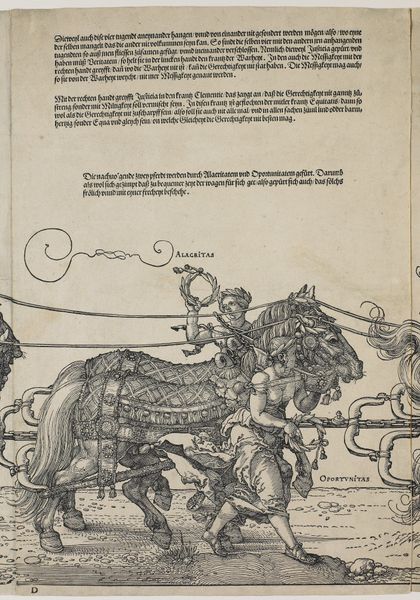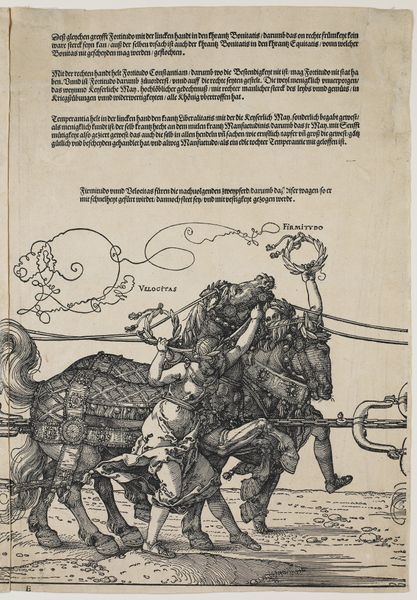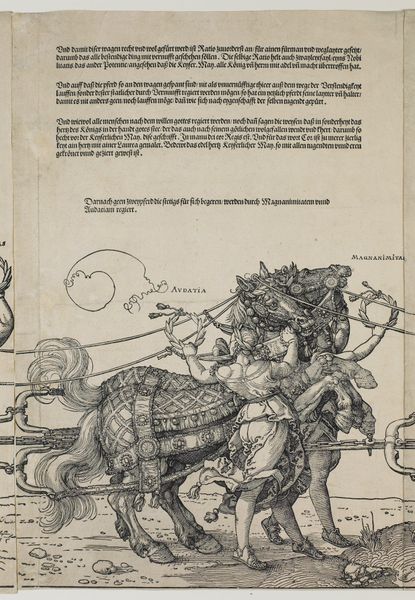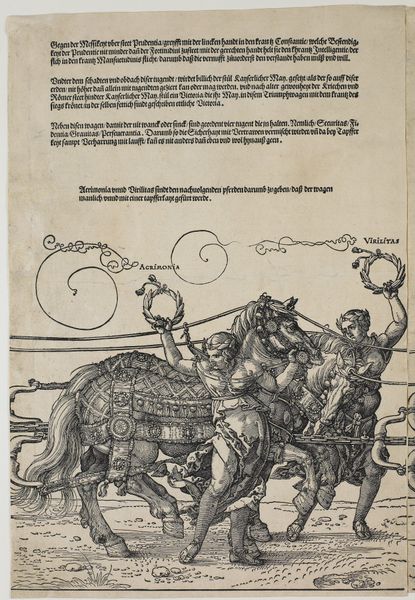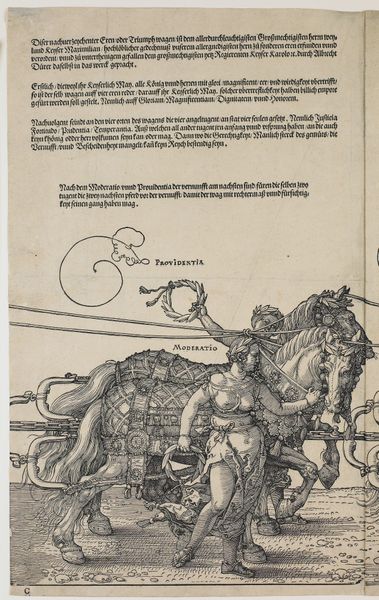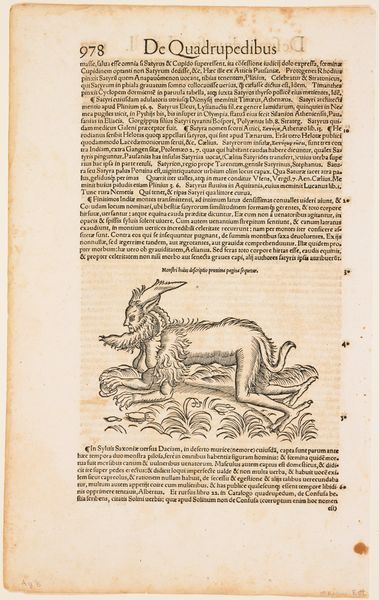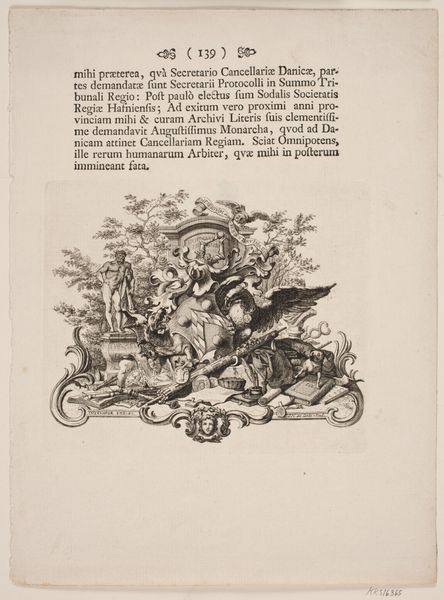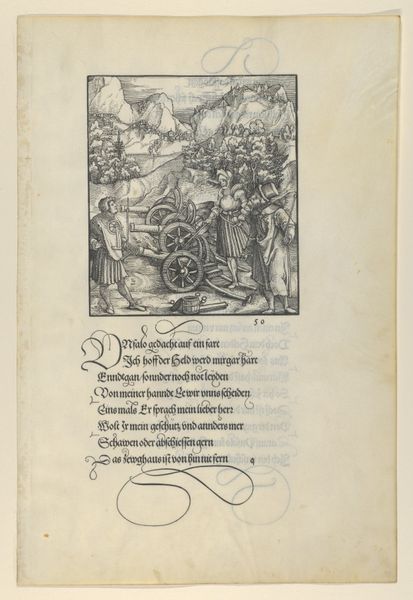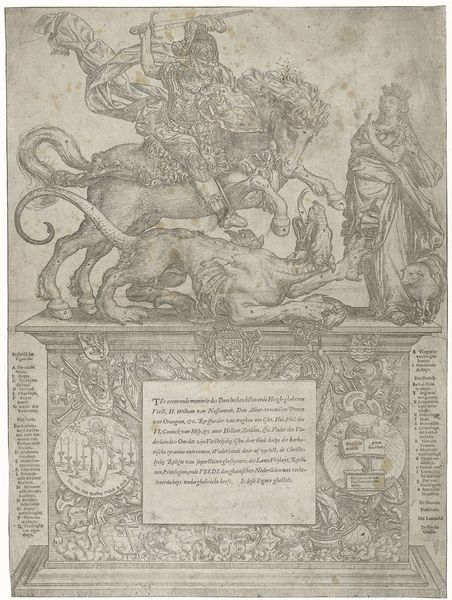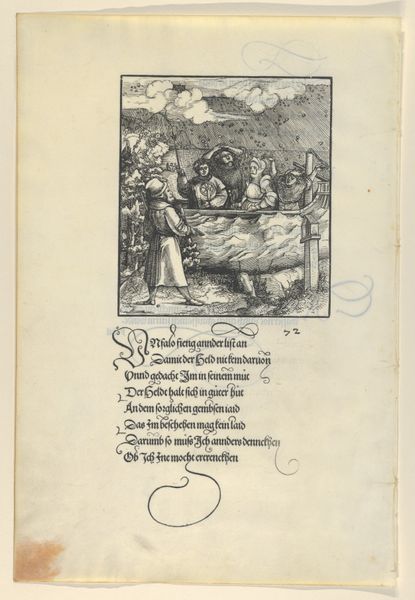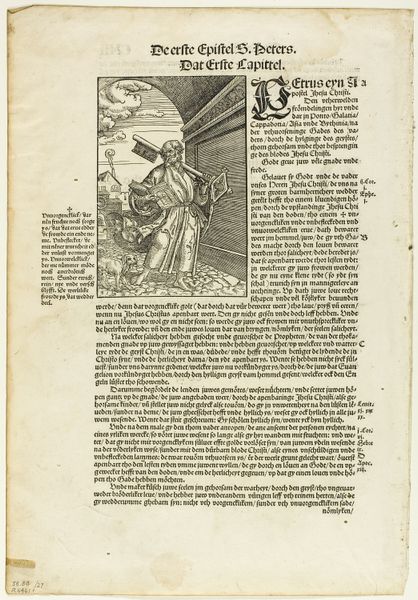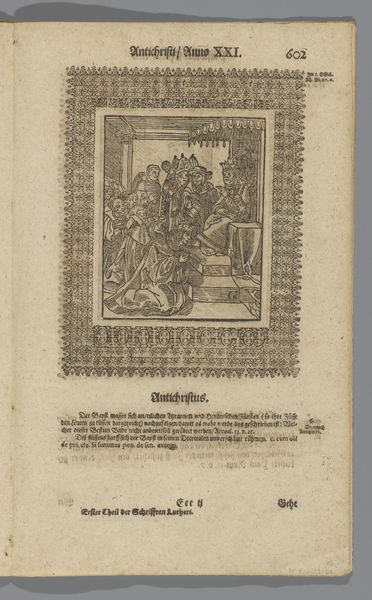
Large Triumphal Carriage of Maximilian I c. 1518 - 1522
0:00
0:00
print, woodcut, engraving
#
narrative-art
# print
#
figuration
#
woodcut
#
line
#
history-painting
#
northern-renaissance
#
engraving
Dimensions: 16 x 12 13/16 in. (40.64 x 32.54 cm) (sheet)
Copyright: Public Domain
Albrecht Dürer, around 1518, created this woodcut, "Large Triumphal Carriage of Maximilian I," a magnificent procession of the late Holy Roman Emperor. Two female figures lead the horses, each holding laurel wreaths, symbols of victory and honor. The wreaths, ancient Roman symbols, are adapted here to celebrate imperial power. Consider the laurel wreath—its roots trace back to ancient Greece and Rome, awarded to victors and emperors, signifying triumph and glory. In Dürer's time, this iconography was interwoven with Christian symbolism. Interestingly, in other contexts, the wreath appears in funerary art, symbolizing eternal life, its form a never-ending circle. This highlights its emotional versatility, capable of conveying both the exultation of triumph and the solemnity of remembrance. Dürer's woodcut exemplifies how symbols are not static but evolve, carrying layers of collective memory. The wreath, a potent emblem, continues its journey through art history, appearing in various forms, each time echoing its layered past, and resurfacing across time.
Comments
minneapolisinstituteofart almost 2 years ago
⋮
Dürer's magnificent allegorical design for the Imperial chariot was originally commissioned in 1512 as the centerpiece of Maximilian's Triumphal Procession, one of the most ambitious projects in the history of the graphic arts. Dürer's elaborately embellished carriage was intended to form the climax of the entire procession, showering the Emperor in personal glory, while underscoring his dynastic power. The final fully elaborated drawing for the woodcut was completed only in 1518, and the woodcut remained unfinished at the time of the Emperor's death in 1519. In 1522, Dürer published the Triumphal Chariot himself as an independent woodcut dedicated to the Emperors Maximilian and Charles V. The print differs from the original design in the addition of printed text explaining the various symbolism of the work and a short history of its production. Dürer also omitted the Emperor's family from the composition, for after Maximilian's death it seemed fitting to interpret his "triumph," not as a dynastic manifesto but as a personal apotheosis.
Join the conversation
Join millions of artists and users on Artera today and experience the ultimate creative platform.
